PALENQUE
Tourism in PALENQUE
Palenque is a Chiapas city of Mayan origin, head of the municipality of the same name located in the north of the state. The indigenous population is formed mainly by the Chol, Tzeltal and Lacandon ethnic groups. The municipality borders Guatemala to the southeast, has three border sectors with the state of Tabasco and is also a neighbor of the Chiapas municipal entities of Catazajá, La Libertad, Ocosingo, Chilón and Salto de Agua. The closest cities to Palenque are Villahermosa, Tabasco, located 145 km to the west and San Cristóbal de las Casas, which is 219 km to the south.
Map of PALENQUE
History
The pre-Columbian city of Palenque was built during the Classic Period, which began in the middle of the third century after Christ, beginning one of the most powerful and outstanding Mayan dynasties in history, due to the quality of its constructions and the beauty of its art. The Hispanic town was founded in 1567 by the Spanish Dominican friar Pedro Lorenzo de la Nada, who managed to integrate the Chole Indians. The valuable archaeological zone was discovered in 1740 and in 1813 the Cortes of Cádiz elevated Palenque to the category of town; the title of city was awarded in 1972 and that of Pueblo Mágico in 2015.

Weather
Palenque has a tropical, hot, humid and rainy climate. The annual average temperature is 26.6°C; which rises to almost 30°C in May, the hottest month, and subsides a little in winter, when the thermometer reads 23°C in January. The heat can rage up to 36°C at times, while during cool highs, the temperature never drops below 17°C on the coldest winter nights. In Palenque it rains a lot, an average of 2,394 mm a year and in any month there can be a downpour, although the most marked rainy season is between June and October.
Tourist Attractions
Palenque is a fundamental place in the pre-Columbian history of Mexico due to the size, majesty, quality of the constructions and talent displayed in its multiple artistic manifestations. The imposing Mayan city is a must for every Mexican lover of the country’s history and is one of the most frequented sites by international archaeological tourism and by world specialists in the field. To round off the visit to the archaeological site, you must take a tour of the Alberto Ruz Lhuillier Site Museum.
A little overshadowed by the fame of Palenque, near the city are other sites of great importance, such as Bonampak, Yaxchilán and Toniná. And since everything cannot be archaeological ruins, Palenque and its surroundings offer charming natural attractions for outdoor recreation, such as the Aluxes Ecopark, the Agua Azul Waterfalls, the Misol Ha Waterfall and the Agua Clara Spa. Another place of interest near Palenque is the small town of Catazajá.
The archaeological site of Palenque is one of the most impressive of the Mayan culture, although it has only been explored and excavated in a small fraction of its extension. It is believed that more than a thousand structures are still buried in the thicket, and those uncovered represent a remarkable display of the constructive and artistic skills of the Mayans. It was built during the Classic Period, abandoned before the conquest and rediscovered in the 18th century. In what has been discovered so far, the Temple of the Inscriptions, the Palace, the Set of Crosses, the Aqueduct and other buildings stand out. Palenque has the categories of National Park and World Heritage Site.
Temple of the Inscriptions
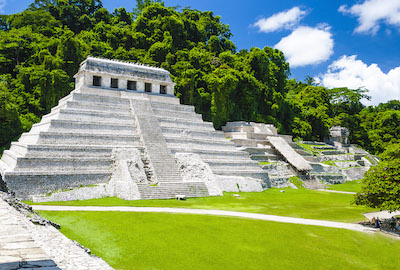
It is located in an area known as the Great Plaza, on a natural slope. It was started by the famous Mayan ruler Pakal the Great and completed by his son in the 80s of the 7th century. It receives its name from the superb amount of hieroglyphic texts and stucco reliefs that have made a fundamental contribution to the understanding of the Mayan civilization. In 1949 the tomb of Pakal was found under the temple. The building is an 8-level step pyramid and a temple that represent the 9 levels of the Mayan underworld, measuring 22.8 meters in height in total.
The Palace
This splendid building has an area of about half a hectare, measuring 85 meters from north to south and 60 meters from east to west. It has wide stairways on three of its facades and was erected by Pakal on the remains of previous constructions. In the center of the Palace stands a four-section tower built entirely in masonry and with thick pillars, which is believed to have been used for defensive surveillance, although another version indicates that it may have had astronomical purposes. Its spacious patios, the number of rooms and the large decorated galleries indicate that it was the scene of great splendor.
Set of the Crosses
It is made up of three main buildings: the Temple of the Cross, the Temple of the Foliated Cross and the Temple of the Sun. All three were characterized by having been erected on stepped pyramids and by their reliefs. A dead king put king! the saying goes. The ensemble was erected to honor Chan Bahlum II on his accession to the throne after the death of Pakal the Great. The name of Las Cruces is inappropriate, since in truth the temples are representations of the tree of creation according to Mayan mythology. From the Temple of the Cross, the central panel was removed with the representation of a monster from which a corn plant sprouts, which is preserved in the National Museum of Anthropology.
The Aqueduct

It is a vaulted structure, three meters deep, that leads the waters of the Otulum River below the main square, on the eastern side of the Palace. Downstream, at the site called Bath of the Queen, there is a stone bridge. The Mayans were very skilled in building water supply systems; In July 2016 the National Institute of Anthropology and History announced the discovery of a complex hydraulic system under the tomb of Pakal the Great. It is believed that it could be related to an inscription engraved on the ruler’s tomb, which indicates that to enter the underworld he had to submerge himself in water.
Alberto Ruz Lhuillier Site Museum
This museum located in the archaeological site is named after the Franco-Mexican archaeologist Alberto Ruz Lhuillier, a notable researcher of Mesoamerican Mayan cities and discoverer in the middle of the 20th century of the tomb of Pakal the Great in the Temple of the Inscriptions of Palenque. The sample exhibited is made up of pieces rescued from the site itself, explanatory models and other aids. Among the most relevant objects there are ceramics, funeral ornaments, boards and ceremonial offerings, various sculptures, the death mask of Pakal the Great and that of the so-called Red Queen, a woman who is supposed to be Ahpo-Hel, the wife of the famous ruler.
Other buildings near Palenque
The Temple of the Count has a somewhat extravagant history, since in pre-Hispanic Mexico there were no counties. It receives that name because it was the home of the French explorer and artist Jean-Frédéric Waldeck, when he spent a season in Palenque in the 1820s; Waldeck called himself an earl. The Temple of the Count is accessed through a sloping staircase. The Temple of the Lion had a neat bas-relief, sadly destroyed, with a king with a throne in the form of a two-headed jaguar.
Tourist Attractions near PALENQUE
Cascadas de Agua Azul (Agua Azul Waterfall)
These waterfalls, for many the most beautiful in Mexico, are located in a flora and fauna protection area located in the Chiapas municipality of Tumbalá, 64 km from Palenque. The precious turquoise blue of the waters is communicated by the carbonate particles in suspension, and together with the white of the foam and the green of the vegetation, it forms a vignette of incomparable beauty.
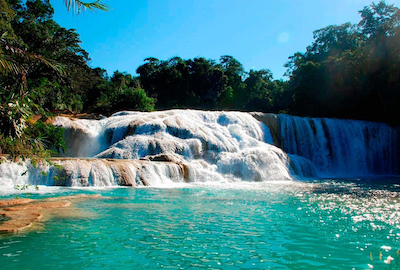
The current descends in a staggered manner, forming waterfalls and natural pools in which it is a delight to submerge. The mineral-rich waters also petrify tree trunks that are common to see on the banks or in the middle of the stream.
Aluxes Ecopark
It is a park and wildlife refuge that develops an authentically environmental concept, favoring the maximum interaction of visitors with animals. It is located near the archaeological ruins and is largely fed by the seizures of animals at risk made by the authorities.
There you can feed crocodiles and manatees, as well as be in contact with baby crocodiles, scarlet macaws and giant tortoises. They also offer boat rides and guided day and night tours for groups of at least 4 people. They are open every day of the year between 9 AM and 4:30 PM.
Balneario Agua Clara
It is an ecotourism park located 55 km from Palenque on the way to the Agua Azul Waterfalls on Highway 199. The water current is formed by the contribution of a network of rivers among which are the Shumulhá or Agua Clara, the Tulijá, Michol, Bascam and Misol Ha. In the body of water and its surroundings you can practice entertainment such as swimming, boating, horseback riding and hiking.
In the exuberant flora it is possible to admire plants such as avocado, red sapodilla, arnica, begonia, wild chincuya, bamboo and copal. It will be a little more difficult for you to see a white-tailed deer or a tepescuintle, two of the main representatives of the fauna of the place.
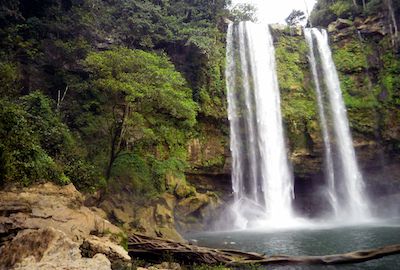
Misol-Ha Waterfall
This 30 meter high waterfall is located 20 km from Palenque; falls forming a well in which you can swim taking the proper precautions. The current forms several waterfalls in the middle of the dense vegetation and was one of the locations of the famous film Predator, starring Arnold Schwarzenegger and shot entirely in Mexican settings.
The area of the waterfall is managed by a community of ejidatarios that also offers ecological accommodation. The chol term “Misol Ha” means “sweep or fall of water”.
Catazajá
30 km. North of Palenque on Highway 199 is the small town of Catazajá, whose indigenous name means “valley covered with water.” Precisely, the main tourist attractions of the place are its bodies of water, especially the Catazajá Lagoon, where you can admire manatees, otters and turtles, and perhaps catch a bass, a carp or a guabina. However, the most interesting fish that lives in the lagoon is the alligator peje, an interesting species both for its role in evolution and for the value of its meat. You might even get one stuffed as a souvenir.
More Tourist Attractions
Crafts in Palenque
The artisans of the area, mainly indigenous Choles, Tzeltales and Lacondones, make beautiful and colorful pieces, ranging from regional costumes and garments with embroidery, to bags and leather backpacks. They are also very skilled in working with ceramics, wood, metals, ornamental stones and amber, and in making pyrography on leather. Another craft specialty of the town are the so-called dream catchers or dream catchers, hoops with a net, decorated with light elements, such as feathers. In these confections, the artisans of Palenque use the wide range of colors offered by the plumage of the birds in the area, although the pieces are not exactly very friendly to the environment.
Gastronomy in Palenque
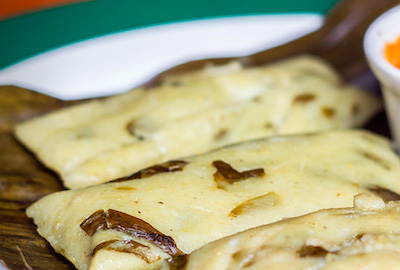
The culinary art of Palenque is strongly impregnated by pre-Hispanic cuisine and its emblematic autochthonous elements, such as corn, chili peppers and cocoa. Among the most symbolic dishes of the extensive pre-Columbian gastronomic legacy are shote con momo, a recipe based on river snails, nixtamal dough and holy grass leaves.
Also the duck in chilmol, in which the meat is cooked in a sauce of tomatoes, chili peppers and other ingredients; the old recipe is with wild duck, but due to its scarcity it has had to migrate to the hatchery and chicken. The venison salpicón, the sweat fish and the typical Chiapas tamales are other delicacies that you cannot miss in Palenque.
You will find all these specialties and others of Mexican and international cuisine in the restaurants of Palenque. One of the typical drinks is the tascalate, prepared with chocolate, corn dough and achiote. Likewise, grinder chocolate, pot coffee, chicha, balché and white pozol are common drinks. Among the sweets, those made with honey are distinguished. (View Gastronomy of Chiapas)
Traditions and Festivities in Palenque
The fair in honor of Santo Domingo de Guzmán, patron of the town, takes place during the first 10 days of August. For the occasion, the Pueblo Mágico is filled with the joy and color of traditional indigenous dances and the music of marimbas, a percussion instrument similar to the xylophone, whose modern double keyboard version was invented in 1892 by the musician and architect. Chiapas Heart of Jesús Borras Moreno. As in all of Mexico, in Palenque Holy Week is celebrated, on September 16, the feast of All Saints and the Day of the Dead, and the day of the Virgin of Guadalupe, on December 12.
More Tourist Attractions in CHIAPAS
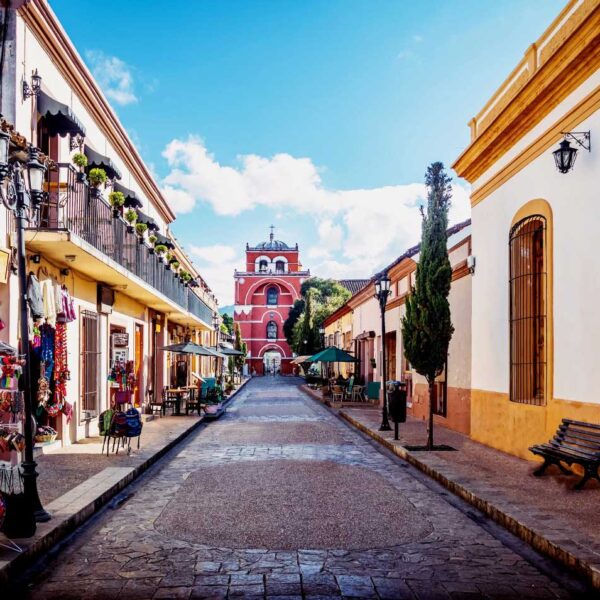
San Cristobal de Las Casas
San Cristóbal de las Casas is one of Mexico’s most beautiful colonial towns. Through its peaceful cobblestone streets, flanked by houses with slanted red tiled roofs and patios full of flowers, one discovers religious monuments with influence from Mexican and Central American colonial art, giving it a peculiar frontier town character. Indigenous people come to its busy markets from the surrounding hamlets to offer textiles, ceramics, fruits and vegetables.… Read More

Ecotourism and Adventure in Chiapas
Ecotourism in Chiapas is currently one of the most popular tourist trends in the state, with activities that try not to alter nature, thus preserving the ecosystem, flora and fauna, while encouraging sustainable development processes in indigenous communities that remain in the region. Responsibly enjoy a vacation in Chiapas and discover the hidden secrets of the state such as impressive natural sanctuaries and indigenous communities in the heart of the jungle where ancestral traditions still try to survive.… Read More
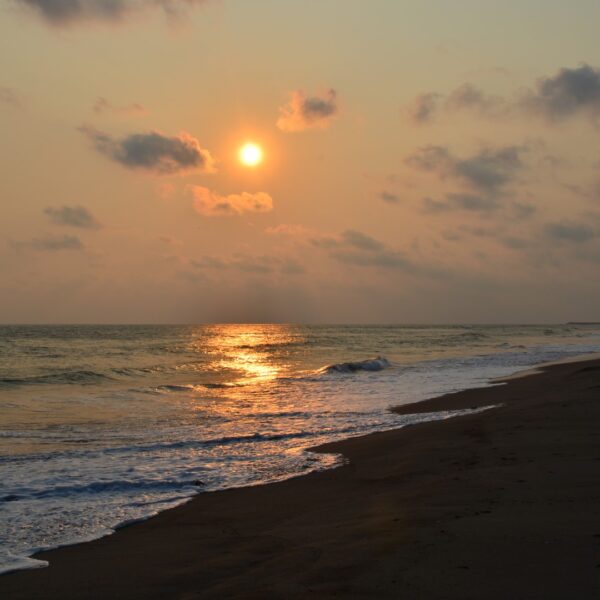
Beaches in Chiapas
The Chiapas coast offers beautiful beaches where you can do a wide variety of water sports. There are beaches of great beauty that are characterized by their tranquility and that are ideal for you to relax and enjoy nature. However, it must be taken into account that many of them face the open sea, so the waves tend to be high and you must be careful to enjoy these waters. Part of the coastal area is immersed in the La Encrucijada Biosphere Reserve, so if you are a lover of venturing into nature, this is one of the places with more options, where you can find some of the largest red mangroves in all of America that are located in a series of estuaries that make the landscape unique.… Read More
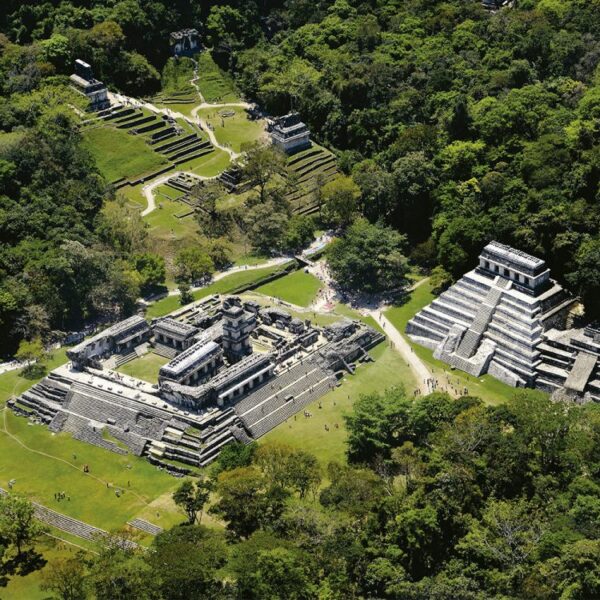
Archaeological Sites in Chiapas
In Chiapas the forests and the jungle are a beauty, spectacular settings for archaeological sites. The incredible nature that accompanies many of these areas is a plus. Visits to archaeological sites are part of nature tourism, due to the opportunity to walk around diverse natural environments. In several of these places you can see animals, or hear them. They are places that also give us the opportunity to connect with nature, and that hand in hand with culture is an excellent combination.… Read More
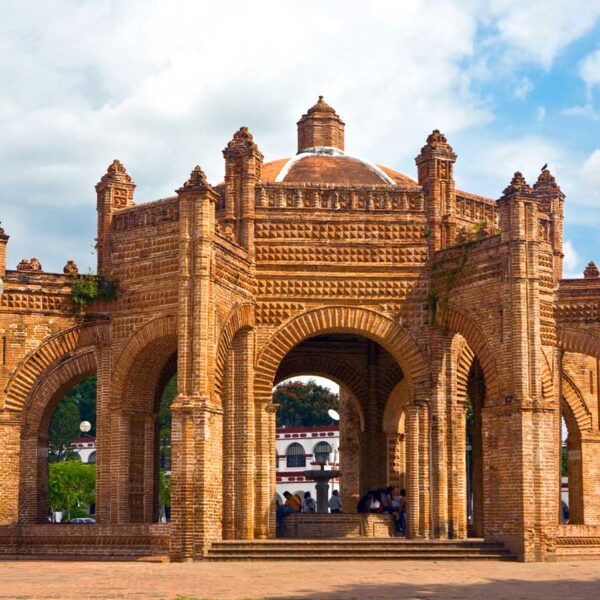
Magical Towns in Chiapas
Chiapas has 4 Magical Towns: San Cristóbal de Las Casas, Chiapa de Corzo, Comitán de Dominguez and Palenque, this recognition is given to the localities that have a special charm and unique symbolic attributes that allow to highlight the character and identity of the town, which they are manifested through their cultural heritage. Some of these characteristics can be: history, architecture, gastronomy and crafts, making your stay a magical moment.… Read More
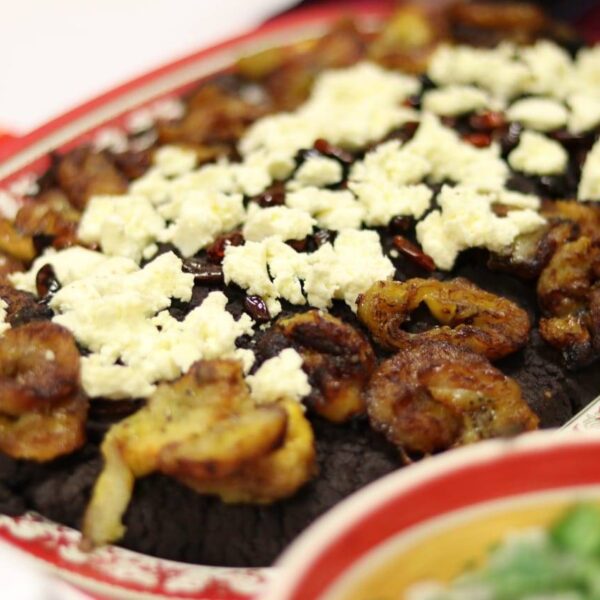
Gastronomy of Chiapas
Chiapas food has certain features of authenticity, it is a gastronomic mosaic made up of its natural biodiversity, where each place prints its own characteristics, defines tastes and creates habits; varies in each region; Likewise, it is nourished by the diversity of Mayan ethnic groups and the Zoque of Olmec origin that when combined with Spanish cuisine by the influx of Dominican monks; It results in an immense variety of dishes of miscegenation typical of the State.… Read More
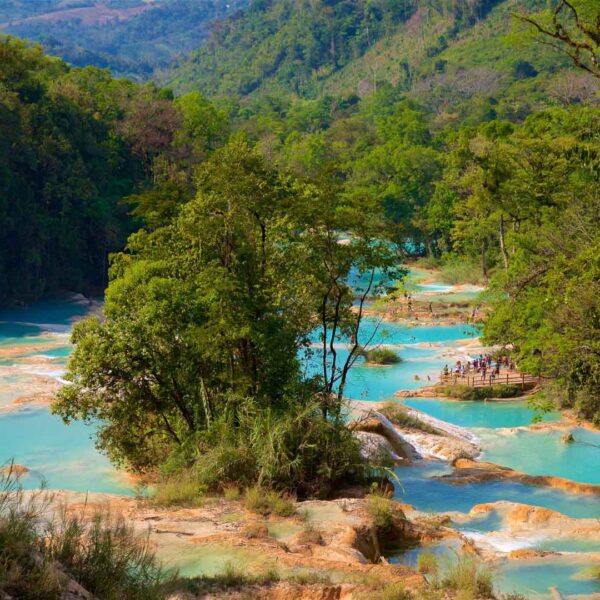
Tapachula and Tonala
Tapachula and Tonalá will amaze you with their beautiful buildings, their people and their traditions, colonial monuments, and breathtaking landscapes. Tapachula is also known as “La Perla del Soconusco” (The Pearl of Soconusco), it is a modern city with beautiful buildings built in a classic style. Located just next to the border with Guatemala, almost at the foot of the volcano Tacaná. Tonalá is a city in the southwest of Chiapas and head of the IX Istmo-Costa region; considered the third city in economic importance of the state; It is located in the transition of the Pacific Coastal Plain and the Sierra Madre de Chiapas.… Read More
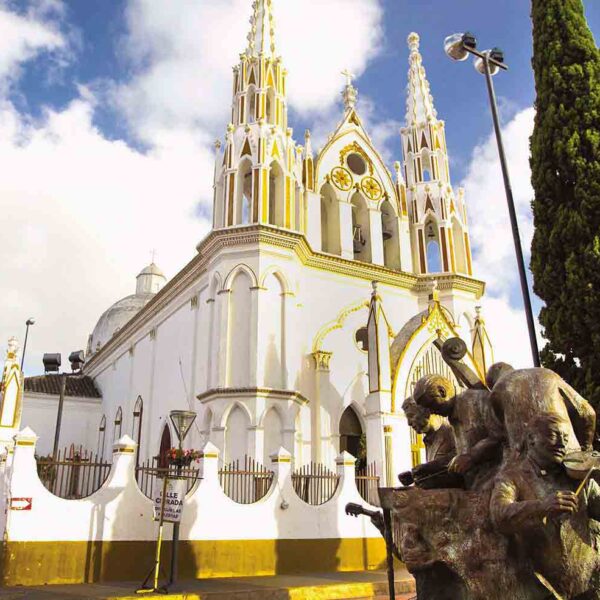
Tuxtla Gutierrez
It is the capital city of the State of Chiapas. Its climate is hot and semi-humid. Tuxtla Gutiérrez is a modern city where culture and traditions of Chiapas blend together. The streets in Tuxtla contain a combination of past and present. It is a beautiful city surrounded by lush vegetation. In downtown there is the Central Park and the beautiful Marimba Park. During the evenings you can stroll around this park and enjoy the marimba music played at the gazebo. There are many natural wonders nearby Tuxtla and the city offers very good touristic infrastructure, but most of all, the city offers the warm and kindness of the people.… Read More
Guided Tours in CHIAPAS
Flights & Hotels in CHIAPAS
More Tourist Attractions in MEXICO

Archaeological Sites
The Archaeological Zones are the cultural past of every Mexican. You will be amazed at the ambient, nature and the environment that surrounds them. Climbing to the top or being around it will take us back in time to admire every detail. México is a country of culture and traditions, many of which we have inherited from the pre-Hispanic inhabitants of this vast territory, although it is true that there were more settlements in the central and southern part of the country, it is also possible to find some archaeological remains in the north.
… Read More

Beaches
On the Beaches of Mexico you can immerse yourself in the intense blue ocean of the Pacific bays, sunbathe on the shore of the warm and transparent waves of the Caribbean Sea in Quintana Roo or even rest on the beautiful coasts of the Gulf of Mexico. Mexican beaches hide wonderful secrets for the traveler. By visiting them, in addition to enjoying the excellent climate and water activities, you can discover splendid archaeological sites and interesting colonial cities without traveling long distances.… Read More

Traditions in Mexico
It is practically impossible to make a meticulous, and above all, accurate selection of the places to visit in Mexico. Each place that our country houses is unique and beautiful in its own way. Mexico, with its nearly 2 million km², has a large number of scenarios to offer, as well as endless activities to do. Do not lose your way and enter the places to visit in Mexico. In Mexico, apart from the beaches and its famous archaeological sites, there are many other really interesting sites and activities that you should know. In the surroundings of the main cities you will find places full of culture and tradition, where you can spend relaxing, interesting and fun vacations. On your trip through Mexico you cannot stop obtaining souvenirs, the crafts that are made here are of the highest quality and recognized worldwide. A shopping tour cannot be missed.… Read More

Magical Towns
A Magical Town is a place with symbols and legends, towns with history that in many cases have been the scene of transcendent events for our country, they are places that show the national identity in each of its corners, with a magic that emanates from its attractions ; visiting them is an opportunity to discover the charm of Mexico. The Magical Towns Program contributes to revalue a set of populations in the country that have always been in the collective imagination of the nation and that represent fresh and varied alternatives for national and foreign visitors. A town that through time and in the face of modernity, has conserved, valued and defended its historical, cultural and natural heritage; and manifests it in various expressions through its tangible and intangible heritage. A Magical Town is a town that has unique, symbolic attributes, authentic stories, transcendent events, everyday life, which means a great opportunity for tourist use, taking into account the motivations and needs of travelers.… Read More

Ecotourism and Adventure
Mexico is one of the best countries for Ecotourism as it has a great variety of flora and fauna, as well as a large number of refuges for extraordinary species. You can enjoy recreational activities of appreciation and knowledge of nature through contact with it, such as: stargazing, observation of natural attractions, wildlife and bird watching. Throughout México there are more than 176 protected natural areas, 5 of them considered by UNESCO as Natural Heritage of Humanity. Just for this and much more, we believe that Mexico is a Paradise for Ecotourism.… Read More

Capital Cities
Folklore, gastronomy, literary culture, art and exhibitions, is what you will find in the capitals of the states of Mexico. To the north, colonial Mexico, Puebla, Guadalajara, Guanajuato, the Sonoran desert and the California peninsula. To the east Veracruz and the gulf. To the west Acapulco, Oaxaca and Tuxtla Gutiérrez. And to the south the Riviera Maya and the pyramids of Chichén-Itzá, Tulúm and Cobá in Yucatán, Palenque in Chiapas, the cenotes, and the Central American jungles.… Read More

States Of Mexico
Mexico has an incredible diversity of landscapes, where the beauty of its beaches, internationally recognized, stands out. In its vast territory of coasts, there are beaches of unparalleled beauty, and colorful landscapes. A large network of first-class hotels and tourist services is available to visitors to these beaches. Mexico is also mystical places, dotted with archaeological testimonies inherited from its original inhabitants. Monuments made by the Mayas, Aztecs and Toltecs are located in magical landscapes, like lighthouses in an ocean of natural beauty. They offer visitors buildings that tell their history, and museums that collect their cultural heritage. And that keep alive ancestral traditions, in ceremonies and festivals, where you can enjoy cultural activities and entertainment.… Read More

Gastronomy
The Gastronomy of Mexico has a great diversity of typical dishes, which is why it was recognized by UNESCO as Intangible Heritage of Humanity. The basic and representative ingredients of Mexican dishes are: corn, coriander, chili, beans, piloncillo, nopal and tomato. Mexican cuisine is also characterized by its sauces, which serve as an accompaniment to traditional dishes, prepared based on spices.… Read More

